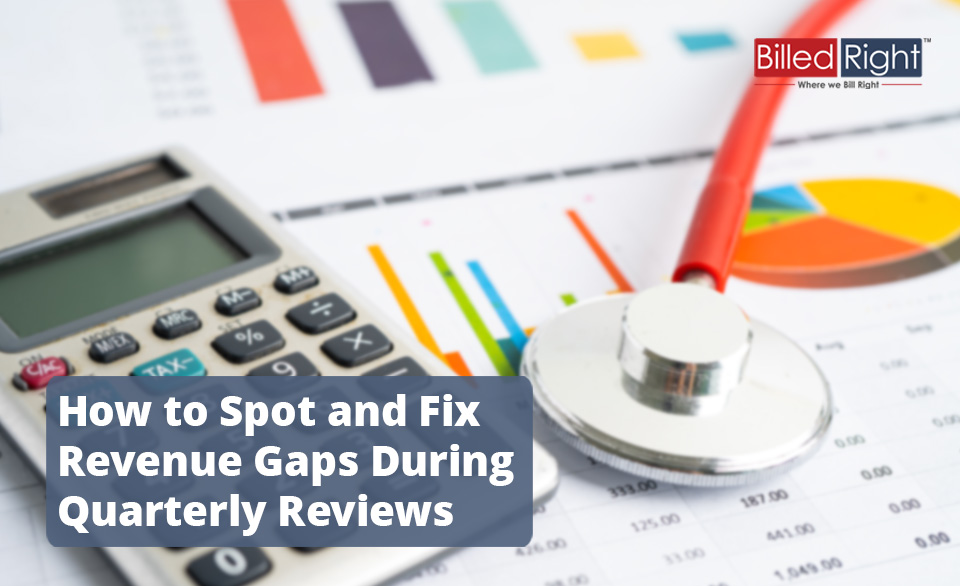How to Spot and Fix Revenue Gaps During Quarterly Reviews

Understanding Revenue Gaps in Healthcare
The healthcare industry faces ongoing challenges related to financial performance. Understanding revenue gaps is essential for enhancing the revenue cycle and ensuring financial sustainability.
Importance of Quarterly Revenue Reviews
Quarterly revenue reviews play a crucial role in identifying revenue shortfalls and assessing the overall financial health of a practice. These reviews provide an opportunity to analyze performance trends and maintain effective financial management practices.
Regularly conducting these reviews allows healthcare professionals to:
- Monitor operational efficiency
- Evaluate reimbursement rates
- Identify patterns in billing and collections
- Adjust strategies proactively to bridge gaps
Implementing quarterly reviews can lead to improved cash flow and financial performance.
Common Causes of Revenue Gaps
Several factors can contribute to revenue gaps in healthcare settings. Recognizing these causes is essential for developing effective strategies to address them. Below are some common issues that can lead to discrepancies in revenue:
| Cause of Revenue Gap | Description |
|---|---|
| Insufficient billing practices | Inaccurate billing codes or unsubmitted claims can hinder revenue capture. |
| Delayed reimbursements | Slow processing of claims by insurance companies can lead to delayed payments. |
| High denial rates | Claims denied by payers lead to delays in revenue collection, emphasizing the need for effective appeals processes. |
| Inefficient patient collections | Challenges in collecting patient payments can create cash flow issues. |
| Lack of performance measurement | Not monitoring key metrics can prevent organizations from identifying performance issues early. |
Identifying these revenue gaps is essential during quarterly reviews. Tracking key metrics to track in quarterly reviews can also aid in understanding financial challenges better.
Strategies for Identifying and Filling Revenue Gaps
Effective management of revenue gaps in healthcare requires comprehensive strategies. By conducting in-depth financial analysis and implementing targeted revenue improvement initiatives, healthcare professionals can optimize their revenue cycle more effectively.
Conducting In-depth Financial Analysis
A thorough financial analysis is critical for identifying revenue gaps during quarterly reviews. This analysis should focus on various financial metrics to understand where the gaps are occurring. Key components include evaluating billing processes, understanding collections efficiency, and analyzing service line profitability.
| Financial Metric | Description | Target Range |
|---|---|---|
| Days in Accounts Receivable | Measures average days to collect payments | 30 – 45 days |
| Collection Rate | Percentage of billed services collected | 95% or higher |
| Denial Rate | Percentage of claims denied by payers | Less than 7% |
| Patient Payment Percentage | Portion of total payments received directly from patients | Target varies by practice |
By monitoring these metrics, healthcare professionals can gain insights into the effectiveness of their revenue cycle management.
Implementing Revenue Improvement Initiatives
Once revenue gaps are identified, it is essential to implement specific improvement initiatives. These initiatives may include revising billing procedures, optimizing charge capture processes, and enhancing patient engagement practices.
- Revise Billing Procedures: Updating billing codes and ensuring accurate documentation can prevent undercharging.
- Optimize Charge Capture: Ensure all services provided are accurately documented and billed to increase revenue potential.
- Enhance Patient Engagement: Offering clearer communication regarding billing processes can lead to better payment adherence.
Additionally, adopting technology tools can streamline these processes. Utilizing rcm reporting tools for quarterly reviews may further enhance visibility into financial performance, enabling actionable insights for improvement.
Healthcare professionals should also consider training staff on best practices for financial management and engaging them in the revenue cycle processes.
These strategies provide a framework for addressing revenue gaps, ensuring that healthcare organizations can sustain financial health and continue delivering quality care.





